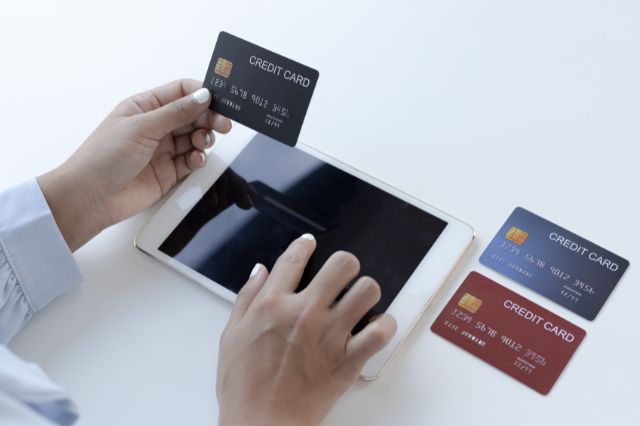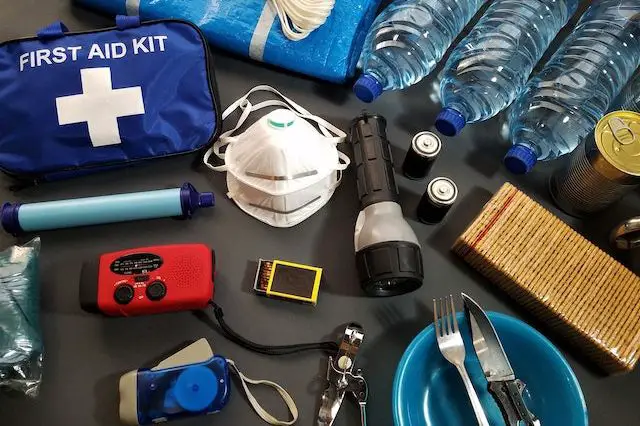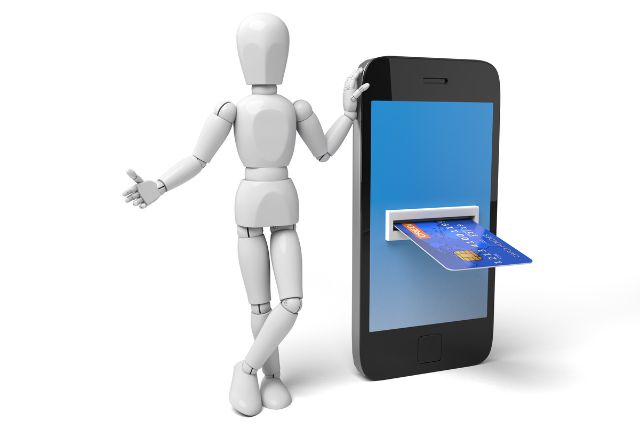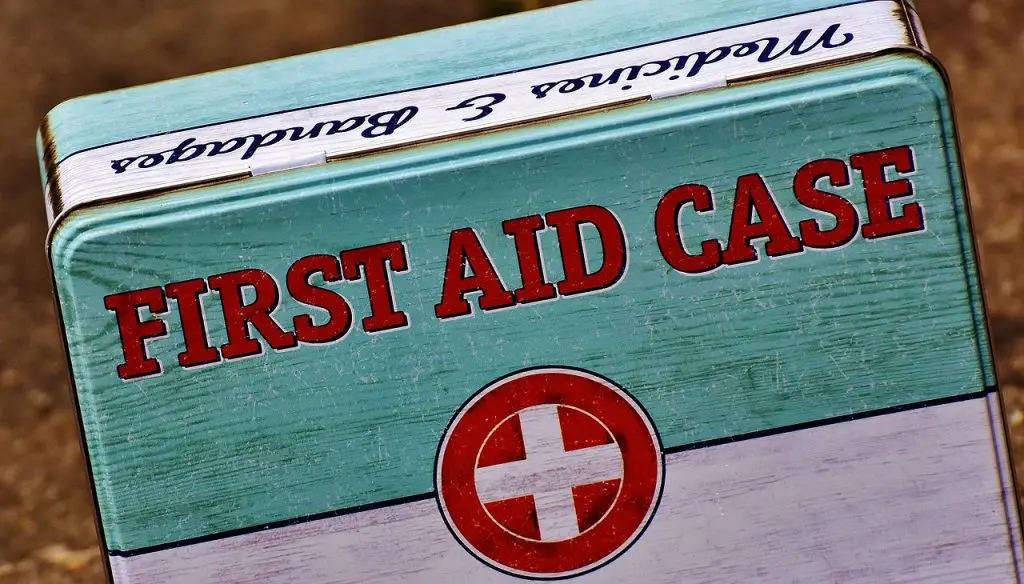Safety Tips
7 Effective Ways to Protect Your Credit Card Information

While credit cards are becoming popular rapidly, there is also a surge in credit card scams. According to the reports, In the last three months of 2019, credit card scams cost 19.7 crores, and the number of fraud cases was 6,117, which is pretty high!
Since online platforms are taking over, knowing and understanding that your information is always at risk is imperative. Especially when you are frequently using that information on different online platforms, there are high chances of them being stolen. There are chances of extreme monetary loss due to these kinds of scams.
Here are seven ways to protect your card information!
1. Do not share your credit card information with anyone
A credit card contains a unique number, the cardholder’s name, the expiry date, and a CVV. This information is required to complete a transaction using the best credit card in India. Do not share these details, especially CVV, with anyone. This is one of the basic yet essential steps of keeping your card safe.
2. Do not click on unauthorised website links or any other suspicious links
Receiving random links on social media sites has become a common occurrence recently. These links are clickbait to lure people into falling for the scammers. Generally, these links have catchy captions that grab attention quickly, and you might click on them out of curiosity. They allow scammers to access your information without your knowledge and commit scams. Also, many random websites ask for debit card or credit card information to access them, and scammers can easily steal your information. Remember not to share any card information on these sites.
3. Do not share any OTP with anyone
A One-Time Password, also known as an OTP, is a secret pin that comes to your registered mobile number after you put the information on any website for the transaction. This pin is required to complete any transaction, so if you received an OTP you have not requested, do not share that with anyone. There are many instances where the scammers ask for OTP over call, do not be gullible and share such information with them. Generally, scammers cannot process any transaction without an OTP.
4. Create Pins that are hard to crack
Do not create pins that are easy to guess. Use at least one capital letter, small letter, number, and special character. Do not use similar pins for all cards. Also, avoid using special dates like birthdays as your pin, which are easy to guess. This will help you to stay safe.
5. Keep changing your PIN frequently
Your pin is the simple and best way to secure your card. ATM PIN is a secret number that only you should know. No one can access your card without that pin, so keep changing your pin at least once a month to stay safe. Keeping the same pin for a long time can risk your privacy.
6. Identify Secured networks before making a payment
One way of identifying a secured network is that the website starts with “HTTPS” instead of “HTTP.” This “s” in “HTTPS” signifies security. Also, the URL section will show as locked, and a little locked sign will appear at the beginning of the URL. This is one of the most common ways to identify a secured website.
Watch carefully before using your credit card on random websites. These websites are encrypted, so the data you enter remains protected through encryption and is hard to crack. Hackers can get your data for any monetary scam if the website is not encrypted.
7. Regularly check bank statements and update immediately in case of any dispute
Generally, we tend to ignore the statements sent by the banks. However, they are essential since they contain every little transaction detail. Check the bank statements carefully to notice if there is any suspicious transaction that happened that you are not aware of. The scammers can be clever, and these statements would be the best way to understand whether your credit card data is being used fraudulently.
In case of any dispute, contact the authorities immediately. Do not delay if you notice any discrepancy in your expenditure statement. Banks tend to help in such cases and reverse the payment.
Credit cards are convenient and easy for online transactions, and you must apply for the best credit cards in India as they would provide better support. However, stay alert and keep yourself updated about the scams.
You can easily avoid these by being slightly more careful.
Safety Tips
What Items Should You Always Have in Case of an Emergency?


Putting together an emergency supply bag is a crucial part of protecting your family from danger in the case of a disaster. You, your family, or your home cannot afford to go without the essentials provided by an emergency pack for a brief period. Keep your kit in a readily accessible location that is well-known to all home members. If you are wondering what items your survival bag should contain, we’ve got you covered. Here is a list of survival items that every house should have.
First Aid Kit
Every residence should have a first aid kit readily available. You may assemble your own, but plenty of pre-packaged options are available from various vendors. Stock up on over-the-counter medicine for anyone in your family who needs it in case of an emergency. Add emergency blankets to your first aid pack. They are constructed of reflective foil, fold up into a bag the size of your fist, and are surprisingly effective at keeping you warm in the event of a crisis.


Water Filter
Human existence depends on access to clean water, yet natural catastrophes may impact public water systems and private wells. The Department of Homeland Security suggests keeping three days’ worth of drinking water (or one gallon per person) in the house at all times. Most homes already have some backup water supply, but being able to make potable water in an emergency may be invaluable. A portable water filter provides low-cost protection while taking up little space. The water may not be refreshingly icy and lemony, but at least it won’t be harmful.
Duck Tape
Because of its versatility, duct tape should always be included in an emergency kit. It has a wide range of applications, from mending leaky roofs and fixing broken windows to wrapping trash for disposal. In addition to its obvious use in a variety of household and survival situations, duck tape has a number of more niche applications. Duct tape may be used to close up ventilation openings if you’re in a potentially hazardous environment. You can use duct tape to fix just about anything in an emergency. Torn clothes, as well as holes in shoes and gloves, may be repaired, but not attractively. It’s useful for making quick fixes to vehicles, such as sealing a leaky hose. With its help, an injured ankle may be supported and a bandage kept in place.
Multitool
The majority of homes have some form of tool set, and some of those sets are likely to be rather complex. Despite this, it is advised that you include a multitool in the emergency kit that you keep in your house. If you do it this way, all of your critical gear will be exactly where you would expect it to be, and it will still be tiny enough to fit in a pocket in case you find yourself in a situation where you need to go exploring without your regular tools.
When you prepare for crises by stocking up on these products, you’ll be doing everything you can to keep your loved ones safe. Make sure everyone in your home is aware of where the emergency supplies are kept. Peace of mind and increased capacity to deal with the unexpected are two benefits of being well-prepared. Maintain vigilance and contingency planning to keep your loved ones safe and secure.
Safety Tips
Top 4 Payment Options to Stay Safe on the Internet


As online transactions become increasingly prevalent in our daily lives, it is crucial to prioritize security when making payments on the Internet. With cyber threats and data breaches on the rise, choosing the right payment options can help safeguard your sensitive information and financial details. In this article, we will explore the top four payment options that can help you stay safe while conducting transactions online. One of these options is Paysafecard, a popular and secure payment method.
Credit Cards
Credit cards are one of the most widely accepted and convenient payment options available online. However, using credit cards requires caution and adherence to security best practices. To stay safe while using a credit card, follow these guidelines:
- Shop on secure websites. Ensure that the website you are transacting on has a secure SSL (Secure Sockets Layer) encryption, indicated by a padlock icon in the browser’s address bar. This encryption ensures that your card details are transmitted securely.
- Use a virtual credit card. Some banks offer virtual credit cards with limited credit lines specifically for online purchases. These cards can minimize the risk of exposing your primary credit card details if a data breach occurs.
- Regularly monitor your statements. Keep a close eye on your credit card statements and report any suspicious or unauthorized transactions immediately to your bank.
Digital Wallets
Digital wallets, also known as e-wallets or mobile wallets, have gained significant popularity in recent years. These wallets provide a secure and convenient way to store payment information and make online transactions. Popular digital wallets include PayPal, Google Pay, and Apple Pay. Here’s why digital wallets can be a safe payment option:
- Encryption and tokenization. Digital wallets utilize advanced security measures such as encryption and tokenization to protect your payment data. This means that your sensitive information is never directly shared with the merchant, reducing the risk of data breaches.
- Two-factor authentication (2FA). Many digital wallets offer 2FA, adding an extra layer of security by requiring a unique verification code or biometric authentication for each transaction.
- Buyer protection. Digital wallets often provide buyer protection programs that can help you resolve disputes or fraudulent transactions, offering an added level of security and peace of mind.
Cryptocurrencies
Cryptocurrencies like Bitcoin and Ethereum have gained popularity due to their decentralized nature and robust encryption protocols. While not yet widely accepted, they offer several security advantages for online transactions:
- Anonymity. Cryptocurrencies provide a certain level of anonymity as transactions are pseudonymous and not directly linked to personal identities, reducing the risk of identity theft.
- Blockchain security. Cryptocurrencies rely on blockchain technology, which provides a decentralized and tamper-proof ledger. This makes it difficult for hackers to manipulate transaction records or compromise the security of your funds.
- Secure transactions. Cryptocurrencies use cryptographic protocols that ensure the integrity and security of transactions. The use of private and public keys makes it challenging for malicious actors to intercept or tamper with your payment information.
Prepaid vouchers
Paysafecard is a prepaid payment method that allows you to make online purchases without disclosing any personal or financial information. Here are some key features of Paysafecard:
- Prepaid vouchers. Paysafecard operates on a prepaid system. You can purchase physical or digital vouchers with a specific value from authorized retailers and use them to make online payments.
- No personal information required. When using Paysafecard, you do not need to provide any personal or financial details. This eliminates the risk of your information being compromised in a data breach.
- Widely accepted. Paysafecard is accepted by a multitude of online merchants and gaming platforms. Convenience and security are the reasons Paysafecard casinos UK becoming more popular nowadays.
Final words
With the increasing prevalence of online transactions, it is crucial to prioritize safety when making payments on the internet. By using secure payment options such as credit cards, digital wallets, cryptocurrencies, and Paysafecard, you can minimize the risk of falling victim to cyber threats and data breaches. Each of these options offers unique security features that provide peace of mind and protect your sensitive information during online transactions. Remember to always exercise caution, stay informed about the latest security practices, and choose the payment method that best suits your needs and preferences.
Safety Tips
How to Deal with an Emergency Situation


No matter where you are or what work you do, there are times when emergency situations arise without any prior warning.
Maybe your coworker gets grievously injured while operating a machine or your family member gets ill suddenly. In these situations, having a good knowledge of how to handle emergencies can be useful.
In the US alone, the CDC has around 130 million emergency visits in houses. But what do you do while you wait for the authorities to arrive? Here are some ways to deal with emergency situations calmly and wisely.
1. Stay calm
Before you begin to do anything, it’s very important to remain calm. If your mind is frayed and your hands are shaking, things will only get worse. It might be easier said than done but remaining calm and composed is essential.
Panicking often prevents you from making the right decisions, so take a deep breath, pull yourself together with the best you can and then tend to the person concerned.
One way to remain calm in dire situations is to undergo mind-training exercises and meditation. Remember to react fast but without agitating yourself.
2. Grab the first-aid kit
After your mind is composed, the next intelligent step is to grab your nearest first-aid kit. This kit helps to soothe wounds, no matter how serious and provides a bit of relief to the person. Having an experience in first-aid courses can help but even if you don’t have one, a bit of basic knowledge will be enough.
Make sure the first-aid kit has all the necessary items like bandages, ointments, iodine solution, a pair of tweezers, and numbing spray among others. If you can’t get hold of a kit, consider what other items in your vicinity might be good enough.
3. Communicate with the victim
It’s important to communicate with the victim and make sure they don’t lose consciousness, especially when the wound is serious. Keep talking to them and ask them to talk back as much as they can.
This will also help them to divert their minds away from the injury or pain. Keep giving them mental and emotional strength and make them hopeful about their recovery.
Until you wait for the ambulance or healthcare authorities to arrive, ask the victim if they have any special medical conditions that need immediate attention.
4. Don’t use the phone too much
Yes, it’s important to call the authorities as soon as possible but make sure you’re not constantly occupied on the phone.
The present situation at hand needs more attention and if you’re engaged on your phone all the time, it will get distracting. Use your cell phone only to make emergency calls and keep the call duration short.
If you’re not sure whether the situation is truly an emergency or not, call the dispatcher and they will help you figure it out. Stay off the phone unless you absolutely need to make calls and don’t receive unimportant ones.
5. Don’t document evidence baselessly
One of the worst mistakes one can make in an emergency is to click unnecessary selfies and post them on platforms without any reason. Never document any evidence and post them on social media. Not only does it show disrespect and irresponsibility but it can also waste a lot of precious time.
If it’s absolutely necessary, use the phone camera to click pictures and save them in your private gallery, for example in a car accident where you have to take photos of the number plate.
6. Ask for help
It’s obvious that calling 911 or similar emergency services is a must when the accident or injury is beyond simple home remedies. If there are any passersby or someone else, ask them if they can help you out too.
Move the victim to a safe location but make sure you don’t hurt them even more while moving. When you call 911, tell them precisely about the physical appearance of the victim, their approximate age, and any other necessary details. These are key points that shouldn’t be missed.
Over to you…
Emergencies are inevitable and we often can’t understand what to do. In such cases, making wise decisions with a calm mind is the best option. You must never be idle when someone near you needs some medical emergency. Take prompt action and call the concerned helplines so that they can reach as fast as possible and shift them to the nearest hospital or clinic.
-



 Captions3 years ago
Captions3 years ago341 Sexy Captions to Fire Up Your Instagram Pictures
-



 Captions3 years ago
Captions3 years ago311 Night Out Captions for Instagram and Your Crazy Night
-



 Captions3 years ago
Captions3 years ago245 Saree Captions for Instagram to Boost Your Selfies in Saree
-



 Captions3 years ago
Captions3 years ago256 Best Ethnic Wear Captions for Instagram on Traditional Dress
-



 Captions3 years ago
Captions3 years ago230 Blurred Picture Captions for Instagram
-



 Captions3 years ago
Captions3 years ago275 Deep Captions for Instagram to Express Your Thoughts
-



 Quotes3 years ago
Quotes3 years ago222 Nail Captions for Instagram to Showcase Your Fresh Manicure
-



 Captions3 years ago
Captions3 years ago211 Laughing Captions for Instagram | Laughter Is the Best Medicine







